Senegal, often referred to as the “Gateway to West Africa,” is a country known for its vibrant culture, historical significance, and diverse landscapes. Located on the westernmost tip of the African continent, Senegal offers a unique blend of urban sophistication, rich traditions, and stunning natural beauty. From the bustling streets of Dakar to the serene beaches of Cap Skirring, Senegal is a destination that captivates the hearts of all who visit.
Table of Contents
Geography
Senegal is situated in West Africa and is bordered by the Atlantic Ocean to the west, Mauritania to the north and northeast, Mali to the east, and Guinea and Guinea-Bissau to the south. The country also completely surrounds The Gambia, a narrow strip of land along the Gambia River. Senegal covers an area of approximately 196,722 square kilometers, making it one of the larger countries in the region.
The country’s geography is diverse, ranging from the arid Sahelian region in the north to the lush tropical forests in the south. The Senegal River, which forms the northern border with Mauritania, is one of the major rivers in the country. The coastal region is characterized by sandy beaches, mangroves, and estuaries, while the interior is marked by savannahs and plateaus.
States of Senegal
Senegal is divided into 14 regions (also known as “régions” in French). Each region is further subdivided into departments and arrondissements. Here’s a simplified version that lists each region with its departments:
| No. | Region | Departments |
|---|---|---|
| 1 | Dakar | Dakar, Guédiawaye, Pikine, Rufisque |
| 2 | Diourbel | Bambey, Diourbel, Mbacké |
| 3 | Fatick | Fatick, Foundiougne, Gossas |
| 4 | Kaffrine | Birkelane, Kaffrine, Koungheul, Malem-Hodar |
| 5 | Kaolack | Guinguinéo, Kaolack, Nioro du Rip |
| 6 | Kédougou | Kédougou, Salémata, Saraya |
| 7 | Kolda | Kolda, Médina Yoro Foulah, Vélingara |
| 8 | Louga | Kébémer, Linguère, Louga |
| 9 | Matam | Kanel, Matam, Ranérou |
| 10 | Saint-Louis | Dagana, Podor, Saint-Louis |
| 11 | Sédhiou | Bounkiling, Goudomp, Sédhiou |
| 12 | Tambacounda | Bakel, Goudiry, Koumpentoum, Tambacounda |
| 13 | Thiès | Mbour, Thiès, Tivaouane |
| 14 | Ziguinchor | Bignona, Oussouye, Ziguinchor |
History
Early History and the Rise of Empires
The history of Senegal dates back thousands of years, with evidence of human habitation as early as the Paleolithic era. The region was home to several ancient kingdoms and empires, including the Ghana Empire, the Mali Empire, and the Songhai Empire. These empires were powerful and influential, controlling vast territories and engaging in trade across the Sahara Desert.
During the medieval period, the region became a hub for Islamic scholarship and trade, with cities like Timbuktu and Djenné attracting scholars, traders, and pilgrims from across the Muslim world. The spread of Islam in Senegal was facilitated by the powerful Islamic empires and the influence of Sufi brotherhoods, which continue to play a significant role in Senegalese society today.
Colonial Era
In the 15th century, Portuguese explorers were among the first Europeans to arrive in Senegal, followed by the French, who eventually established control over the region. The island of Gorée, located off the coast of Dakar, became a major center for the transatlantic slave trade, where millions of Africans were forcibly taken to the Americas. Gorée Island is now a UNESCO World Heritage site and serves as a poignant reminder of this dark chapter in human history.
Senegal was officially colonized by France in the 19th century and became an important part of French West Africa. The city of Saint-Louis, located on the Senegal River, served as the capital of French West Africa until it was moved to Dakar in 1902. French colonization brought about significant changes to the social, economic, and political structures of Senegal, including the introduction of the French language and the establishment of a colonial administration.
Independence and Modern Era
Senegal gained its independence from France on April 4, 1960, with Léopold Sédar Senghor becoming the country’s first president. Senghor, a renowned poet and intellectual, played a key role in shaping Senegal’s post-independence identity, promoting the concept of “Negritude,” which celebrated African culture and heritage. His presidency was marked by efforts to modernize the country, promote education, and foster national unity.
Since independence, Senegal has remained one of the most stable countries in Africa, with a strong tradition of democracy and peaceful transitions of power. The country has also been a leader in regional diplomacy, playing a key role in peacekeeping and conflict resolution efforts in West Africa.
Top Ten Must-Visit Destinations
1. Dakar

Dakar, the capital and largest city of Senegal, is a vibrant metropolis that serves as the cultural, political, and economic hub of the country. The city is known for its lively music scene, bustling markets, and historical landmarks. Key attractions include the African Renaissance Monument, the Dakar Grand Mosque, and the IFAN Museum of African Arts. Dakar is also famous for its nightlife, with numerous clubs and bars offering live music and dance.
2. Gorée Island
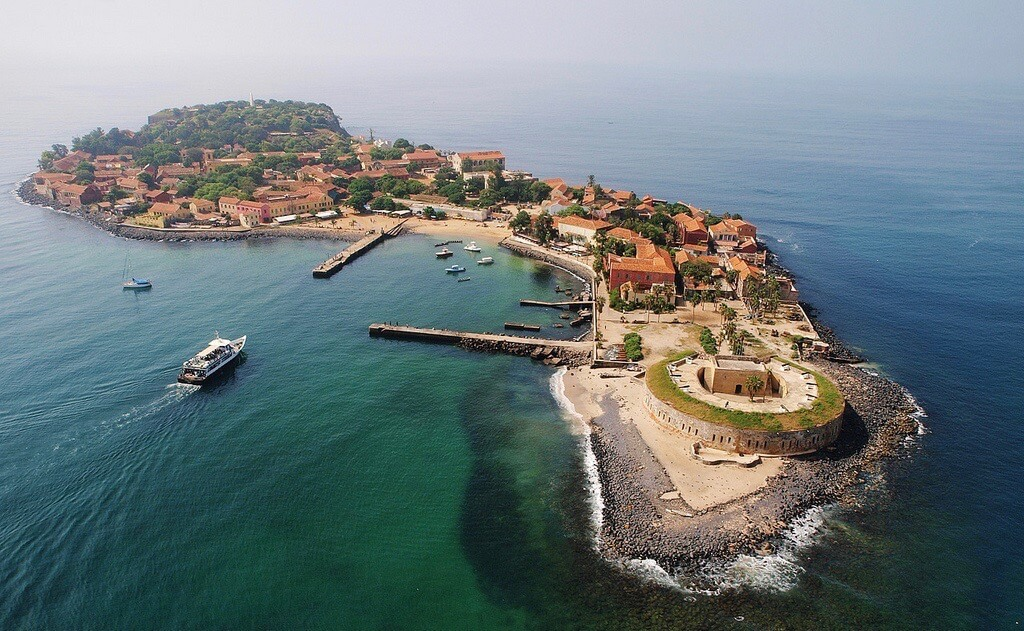
Gorée Island, located just off the coast of Dakar, is a UNESCO World Heritage site that played a significant role in the transatlantic slave trade. The island is home to the Maison des Esclaves (House of Slaves), a museum that serves as a powerful reminder of the horrors of slavery. Visitors can explore the island’s colonial architecture, narrow streets, and historical sites, while also taking in stunning views of the Atlantic Ocean.
3. Saint-Louis

Saint-Louis, a charming colonial city located on the Senegal River, is known for its rich history and cultural heritage. The city was the first French settlement in West Africa and served as the capital of French West Africa until 1902. Saint-Louis is characterized by its colonial-era architecture, narrow streets, and vibrant arts scene. Key attractions include the Faidherbe Bridge, the Saint-Louis Cathedral, and the annual Saint-Louis Jazz Festival.
4. Niokolo-Koba National Park

Niokolo-Koba National Park, located in southeastern Senegal, is a UNESCO World Heritage site and one of the largest national parks in West Africa. The park is home to a diverse range of wildlife, including elephants, lions, leopards, chimpanzees, and a variety of bird species. Visitors can embark on guided safaris to explore the park’s savannahs, forests, and wetlands, and experience the beauty of Senegal’s natural landscapes.
5. Lake Retba (Lac Rose)

Lake Retba, commonly known as Lac Rose, is a stunning pink lake located just north of Dakar. The lake gets its pink hue from the high concentration of salt and the presence of certain algae. Lake Retba is a popular destination for tourists and photographers, offering unique opportunities for swimming, boating, and salt harvesting. The lake’s surreal pink color is particularly striking during the dry season, from November to June.
6. Casamance Region

The Casamance region, located in the southern part of Senegal, is known for its lush landscapes, rivers, and pristine beaches. The region is culturally distinct from the rest of Senegal, with a strong influence from the Diola people. Key attractions in Casamance include the town of Ziguinchor, the beautiful beaches of Cap Skirring, and the traditional villages of the Diola people. The region is also a great destination for eco-tourism and birdwatching.
7. Saloum Delta
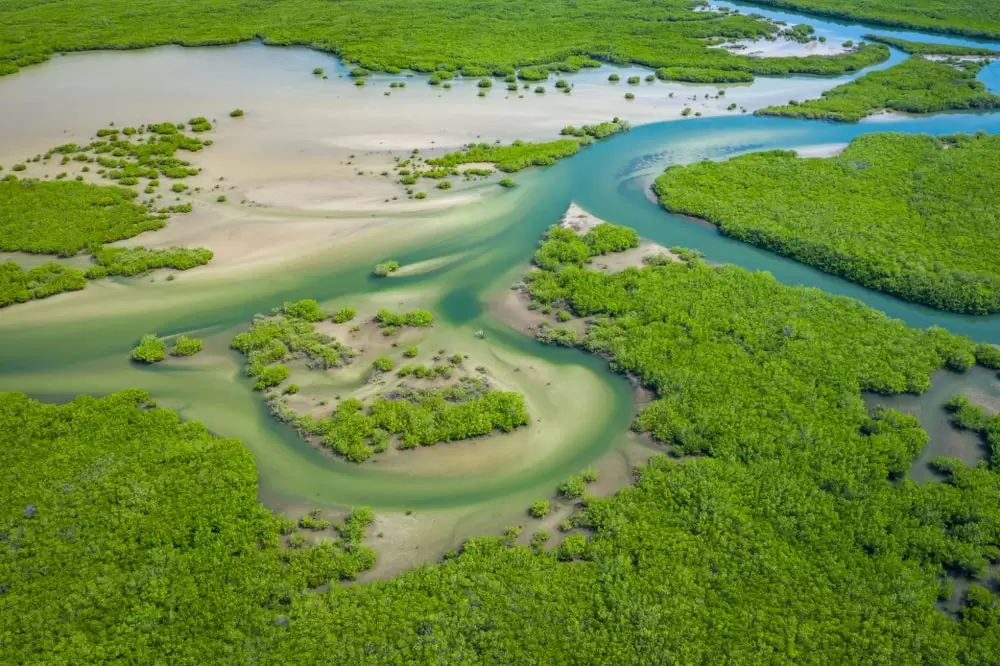
The Saloum Delta, located in central Senegal, is a UNESCO Biosphere Reserve and a haven for biodiversity. The delta is characterized by its mangrove forests, estuaries, and islands, providing a rich habitat for a variety of bird species, fish, and other wildlife. Visitors can explore the delta by boat, visit traditional fishing villages, and enjoy activities such as birdwatching, fishing, and kayaking. The delta is also home to the historic town of Joal-Fadiouth, known for its shell island and traditional Serer culture.
8. Djoudj National Bird Sanctuary
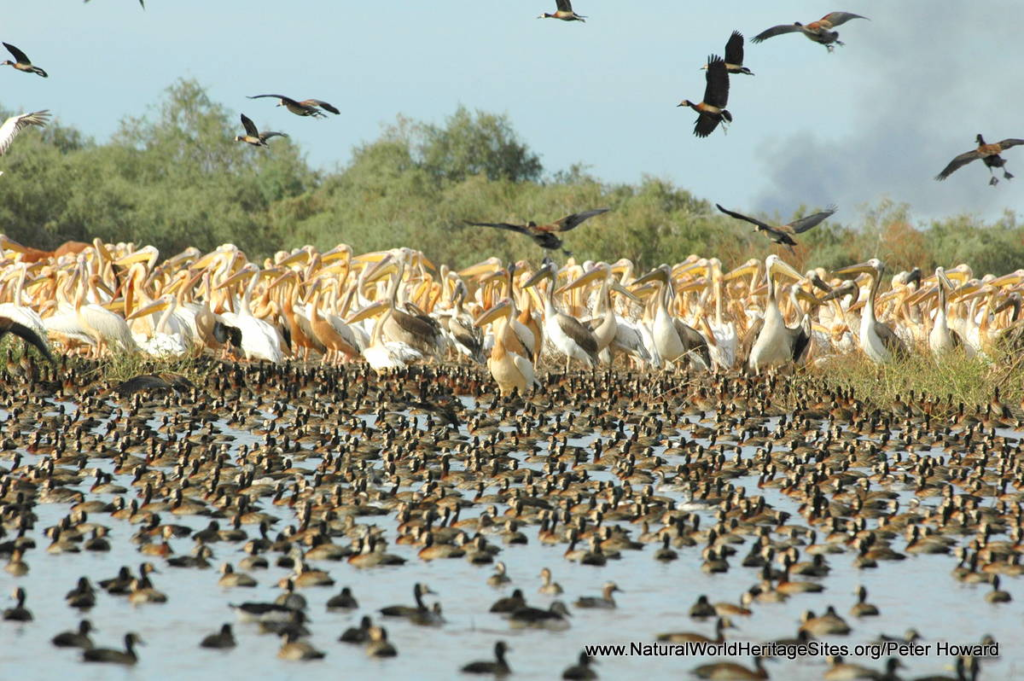
Djoudj National Bird Sanctuary, located in the Senegal River Delta, is one of the most important bird sanctuaries in the world. The sanctuary is a UNESCO World Heritage site and is home to over 1.5 million migratory birds, including flamingos, pelicans, herons, and cormorants. Visitors can take guided boat tours to observe the diverse birdlife and explore the wetland habitats. The sanctuary is a must-visit destination for birdwatchers and nature enthusiasts.
9. Kedougou and the Bassari Country
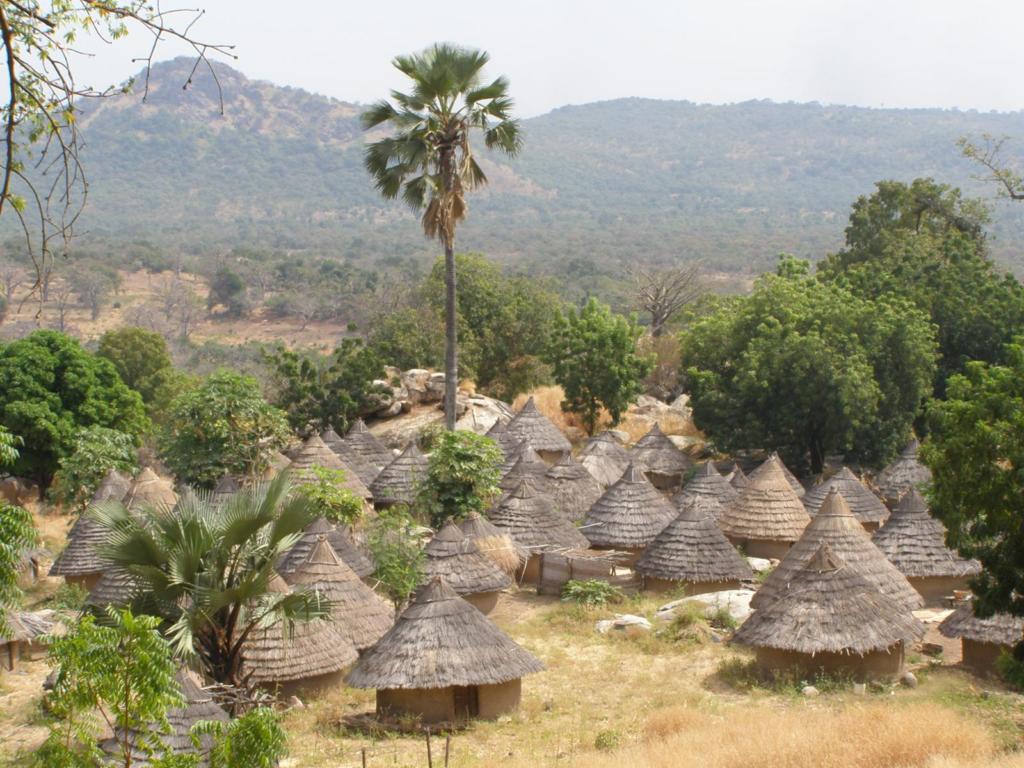
Kedougou, located in southeastern Senegal, is the gateway to the Bassari Country, a region known for its traditional cultures, scenic landscapes, and waterfalls. The Bassari people, along with the Bedik and Fula communities, have preserved their unique customs, rituals, and way of life. Visitors can explore the region’s villages, attend traditional ceremonies, and hike to the beautiful Dindefelo Waterfall, which is surrounded by lush forests and offers a refreshing escape.
10. Ile de Ngor

Ile de Ngor, a small island located just off the coast of Dakar, is a popular destination for beach lovers and water sports enthusiasts. The island offers pristine beaches, clear waters, and a laid-back atmosphere, making it an ideal spot for relaxation and recreation. Visitors can enjoy activities such as surfing, snorkeling, and kayaking, or simply relax on the sandy shores while taking in the views of the Atlantic Ocean.
Culture
Senegal’s culture is a vibrant mix of traditions, music, art, and dance, reflecting the country’s diverse ethnic groups and rich history. The Wolof people are the largest ethnic group, followed by the Fula, Serer, Diola, and Mandinka, among others. Each group has its own language, customs, and cultural practices, contributing to Senegal’s cultural diversity.
Music is an integral part of Senegalese culture, with genres such as Mbalax, a fusion of traditional Wolof rhythms with modern influences, gaining international recognition. Senegal is also known for its talented musicians, including the legendary Youssou N’Dour, who has played a significant role in popularizing Senegalese music worldwide.
Art and craftsmanship are also highly valued in Senegal, with traditional textiles, pottery, and woodcarvings being important aspects of the cultural heritage. The country is home to numerous art galleries, markets, and cultural centers that showcase the creativity and talent of Senegalese artists.
Festivals
Senegal hosts a variety of festivals throughout the year, celebrating its culture, music, and traditions. One of the most famous festivals is the Dakar Biennale, also known as Dak’Art, which is one of the most important contemporary art events in
Africa. The festival attracts artists, curators, and art lovers from around the world, showcasing the best of African contemporary art. Another major festival is the Saint-Louis Jazz Festival, which takes place in the historic city of Saint-Louis. The festival brings together jazz musicians from around the world and offers a unique blend of traditional and contemporary jazz performances in a picturesque setting.
Senegal also celebrates traditional religious festivals, such as Magal de Touba, a pilgrimage to the holy city of Touba, and Tabaski (Eid al-Adha), one of the most important Islamic holidays. These festivals are marked by communal prayers, feasts, and cultural performances, reflecting the deep-rooted Islamic traditions in Senegal.
Economy
Senegal’s economy is one of the most diverse in West Africa, with agriculture, mining, fishing, and tourism being the main sectors. The country is a major producer of peanuts, which are a key export crop, along with cotton, millet, and sorghum. The fishing industry is also significant, with Senegal’s coastal waters providing abundant fish stocks that are vital to both the local diet and export markets.
The mining sector has been growing in importance, with the extraction of phosphates, gold, and other minerals contributing to the country’s GDP. The government has been actively promoting foreign investment in the mining sector, as well as in infrastructure development and renewable energy projects.
Tourism is another important sector of the economy, with Senegal’s rich cultural heritage, natural beauty, and historical sites attracting visitors from around the world. The government has been investing in the development of eco-tourism and promoting Senegal as a safe and attractive destination for travelers.
Cuisine
Senegalese cuisine is a delightful fusion of flavors, influenced by the country’s diverse ethnic groups, French colonial heritage, and Islamic traditions. Rice and fish are staples in the Senegalese diet, with dishes like Thieboudienne (a flavorful fish and rice dish) being considered the national dish. The dish is typically made with fish, rice, and a variety of vegetables, all cooked together in a flavorful tomato-based sauce.
Another popular dish is Yassa, which can be made with chicken or fish marinated in a tangy mixture of lemon juice, onions, and spices, then grilled or fried and served with rice. Mafe, a peanut-based stew, is also a favorite, often made with beef or lamb and served with rice or couscous.
Senegalese cuisine is known for its bold and aromatic flavors, with ingredients like peanuts, tamarind, ginger, and hibiscus being commonly used. Fresh seafood is abundant along the coast, and dishes are often accompanied by fresh salads, baguettes, and local fruits like mangoes, papayas, and bananas.
Top Eight Most Famous Food of Senegal


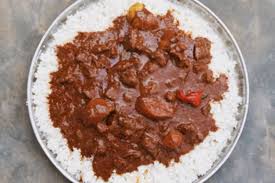




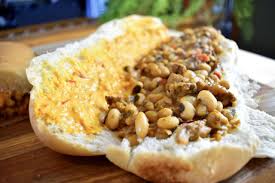
Interesting Facts
- Senegal is home to the African Renaissance Monument, the tallest statue in Africa, standing at 49 meters (160 feet) tall.
- The Senegal River, which forms part of the country’s northern border, is one of the longest rivers in West Africa, stretching over 1,800 kilometers (1,118 miles).
- Dakar, Senegal’s capital, hosts the Dakar Rally, one of the most famous off-road endurance motorsport events in the world.
- Senegal is known for its rich tradition of wrestling, known as “Laamb,” which is considered the national sport.
- The island of Gorée was one of the largest slave trading centers on the African coast during the transatlantic slave trade.
- Senegal has a vibrant music scene, with Mbalax, a genre that fuses traditional Wolof music with modern influences, being the most popular.
- Senegal is a predominantly Muslim country, with over 90% of the population practicing Islam, mostly of the Sufi tradition.
- The country is known for its “Teranga,” a Wolof word that embodies the Senegalese culture of hospitality and warmth towards guests.
- Lake Retba, also known as Lac Rose, is famous for its pink waters, caused by the presence of certain algae and high salt content.
- The Baobab tree, a symbol of Senegal, is often referred to as the “Tree of Life” and can live for thousands of years.
Conclusion
Senegal is a country that offers a rich tapestry of experiences, from its historical landmarks and cultural festivals to its diverse landscapes and delicious cuisine. Whether exploring the vibrant streets of Dakar, relaxing on the beaches of Cap Skirring, or immersing oneself in the traditions of the Casamance region, visitors to Senegal will find themselves captivated by the warmth, beauty, and spirit of this West African gem. Senegal’s unique blend of history, culture, and natural beauty makes it a must-visit destination for travelers seeking an authentic and enriching experience in Africa.

